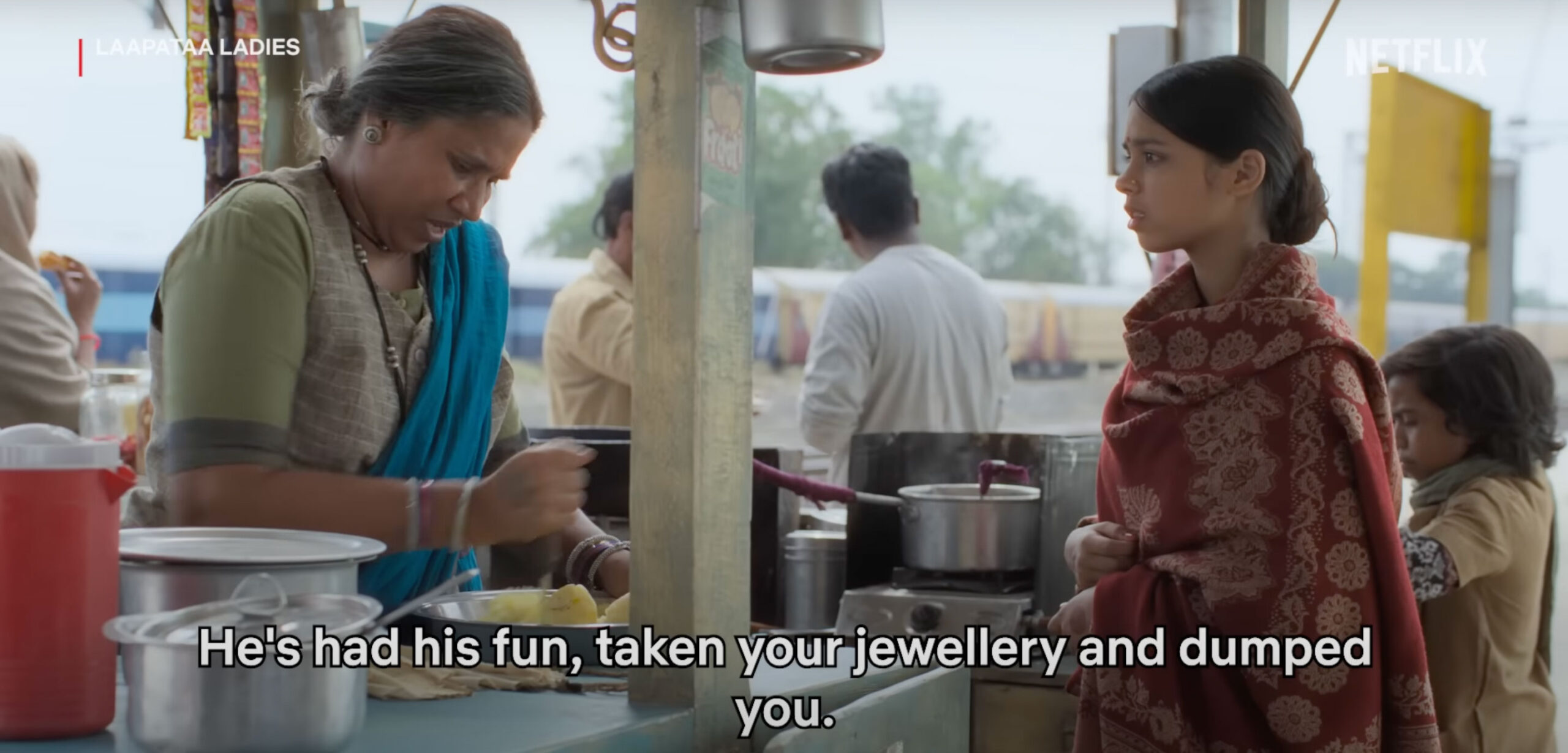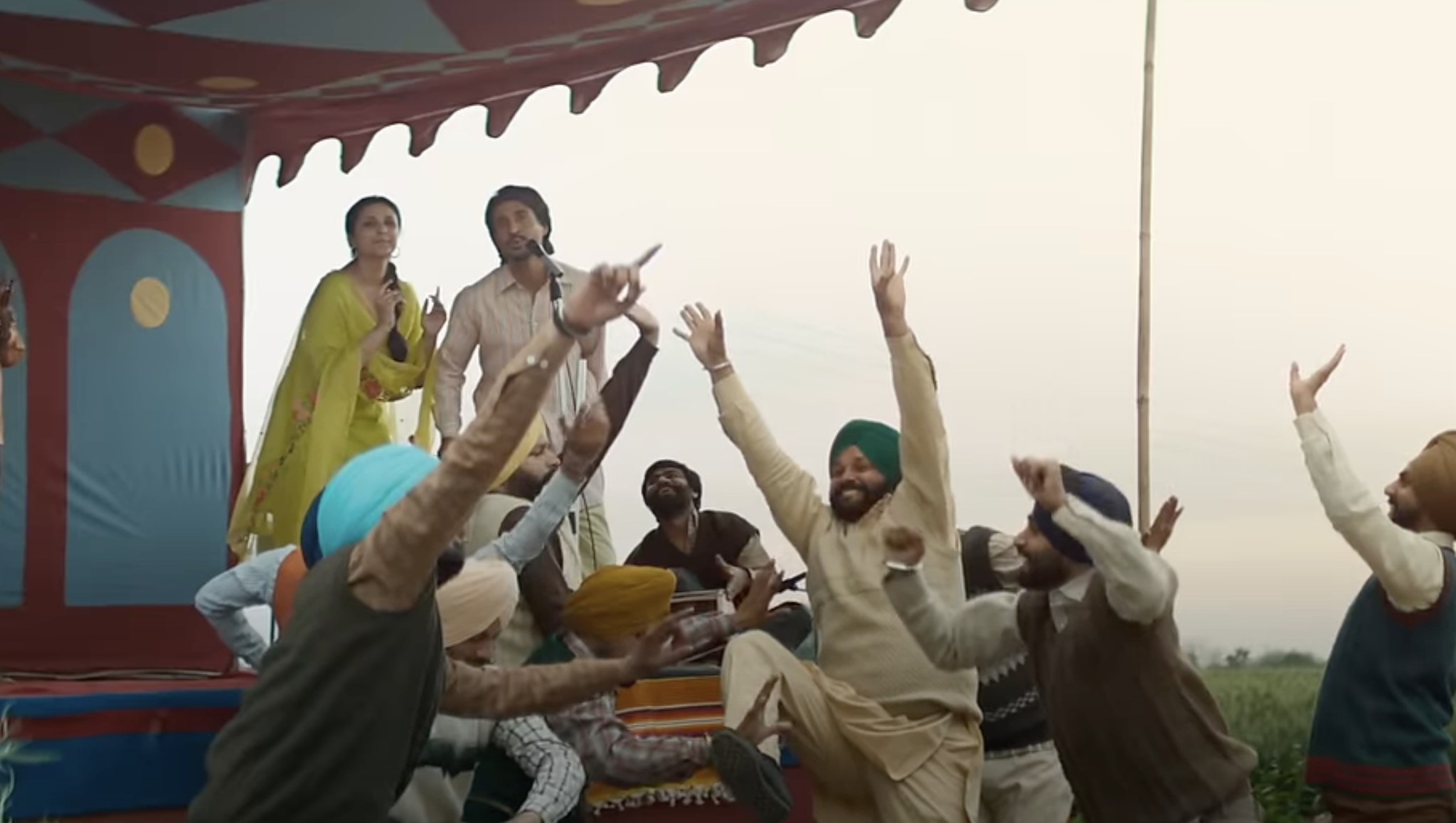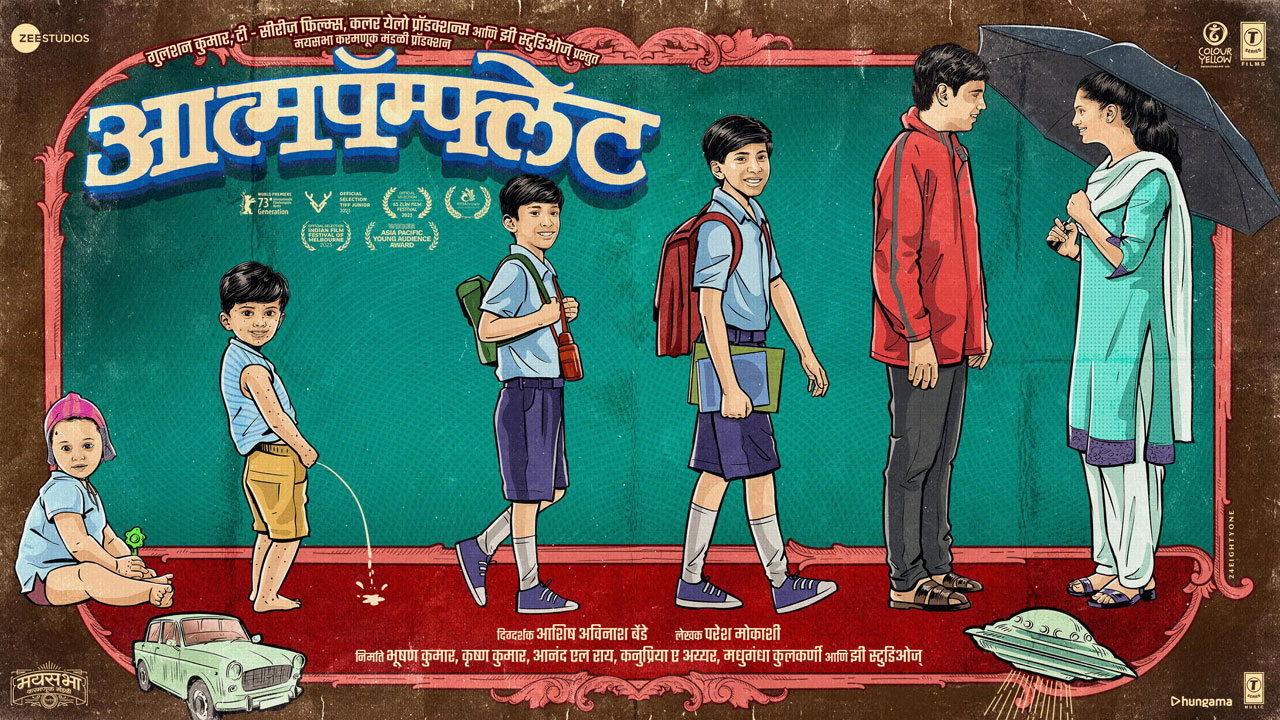Laapataa Ladies is a significant cinematic contribution in contemporary times due to its thematic engagement with the ever-relevant issue, in this society ingrained with patriarchal values, of women wearing the veil – notably without even a single Muslim woman character. The powerful character development of women, who face challenges as the story progresses, adds a refreshing dimension to the narrative. It is about the lost desires of women and how they rediscover themselves and stand up against unfair treatment in a society that favours men. The film is phenomenal because of its thematic motifs, brilliantly woven with narratives that challenge the status quo and celebrate the indomitable spirit of womanhood. Directed by Kiran Rao, the film is about two young brides who, shortly after their wedding, get separated from their husbands during a train journey. As they navigate a strange environment, a case of mistaken identity kicks off a series of catastrophic events. Nitanshi Goel and Pratibha Ranta headline the cast, supported by Sparsh Shrivastav, Chhaya Kadam and Ravi Kishan.
At the heart of the narrative lies the subversion of the veil. Jaya/Pushpa Rani (played by Pratibha Ranta) exemplifies this defiance. Forced into a nightmarish marriage, she embodies the will to break free from the shackles of a tyrannical institution. Her journey resonates with the universality of feminine desires, often suppressed by societal norms. The film poignantly, as well as satirically, portrays the yearning through Jaya’s pursuit of her dreams, reflected in the powerful dialogue, “Don’t apologize for having a dream.” This simple statement pushes women to reclaim and realize their aspirations.

Laapataa Ladies further expands its canvas by introducing a spectrum of female characters, each with their own unique struggles and stories. A divorced or abandoned single mother raises her son alone. Now, he’s grown into a near-outlaw, often getting caught up in brawls and indulging in drunken nights. Desperate, she goes to the police station to secure his bail. Perhaps she is known in the community as a folk singer, earning her livelihood through her music. Today, she employs her singing as a bargaining chip, negotiating the conditions for her son’s release. Manju Maai (Chhaya Kadam), the assertive Bahujan woman, is a testament to the fight against domestic violence. Her defiance against a patriarchal family structure, seeking solace in the symbolic space of the railway station – a constant flow of people in pursuit of their dreams – is a powerful metaphor for her own desire for liberation. In her house, the portraits of Bahujan icons Buddha and Dr Ambedkar, the sources of inspiration for her, catch the audience’s attention. This is another reason for her fearless, independent and assertive personality. The film’s portrayal of Phool Kumari (Nitanshi Goel) serves as a poignant reminder of the limitations placed upon women. Naive and conditioned to fulfil prescribed gender roles, she represents the potential that lies dormant within many women. However, her exposure to the world through the tea stall and her interactions with Manju Maai spark a transformation. The artistic talents of Phool’s sister-in-law, sacrificed at the altar of marriage, symbolize the countless dreams extinguished by societal expectations. Yet, her act of drawing Phool’s portrait becomes a catalyst for change, highlighting the power of sisterhood and solidarity.
While some argue that Laapataa Ladies, with its light-hearted satirical approach, sidesteps a deeper exploration of the multifaceted nature of patriarchy in rural India, I argue that the film’s strength lies in its accessibility. By weaving its message through relatable characters and engaging storytelling, the film ensures that its message finds resonance with a wider audience. The seemingly rushed ending can be interpreted as a deliberate choice, leaving to the audience’s imagination the characters’ journeys beyond the confines of the narrative. The film’s absolute strength is in its ability to accentuate conversations, prompting viewers to critically examine the social and gender dynamics that shape our world.
Laapataa Ladies is a call to action to recognize our normalized problematic surroundings and to make it equitable and accessible at the earliest for everyone irrespective of caste, class, gender and other respective social and cultural associations. It compels us to recognize the strength and resilience of women, while simultaneously urging us to dismantle the structures that perpetuate their oppression. The film serves as a springboard for further exploration, inviting viewers to delve deeper into the complexities of gender relations and advocate for a world where women can truly flourish, free from the constraints of patriarchy.
As Laapataa Ladies gets critical acclaim, it is essential to address certain aspects concerning its portrayal of rural dynamics, labour division, and the interaction among women from different caste groups. The film appears to underutilize these elements, particularly in depicting a patriarchal society where women, despite being victims themselves, often take pride in their “upper-caste” status and treat women from “lower castes” with disdain and, rather than fostering solidarity across caste lines, they tend to reinforce divisions.
Forward Press also publishes books on Bahujan issues. Forward Press Books sheds light on the widespread problems as well as the finer aspects of Bahujan (Dalit, OBC, Adivasi, Nomadic, Pasmanda) society, culture, literature and politics. Contact us for a list of FP Books’ titles and to order. Mobile: +917827427311, Email: info@forwardmagazine.in)





